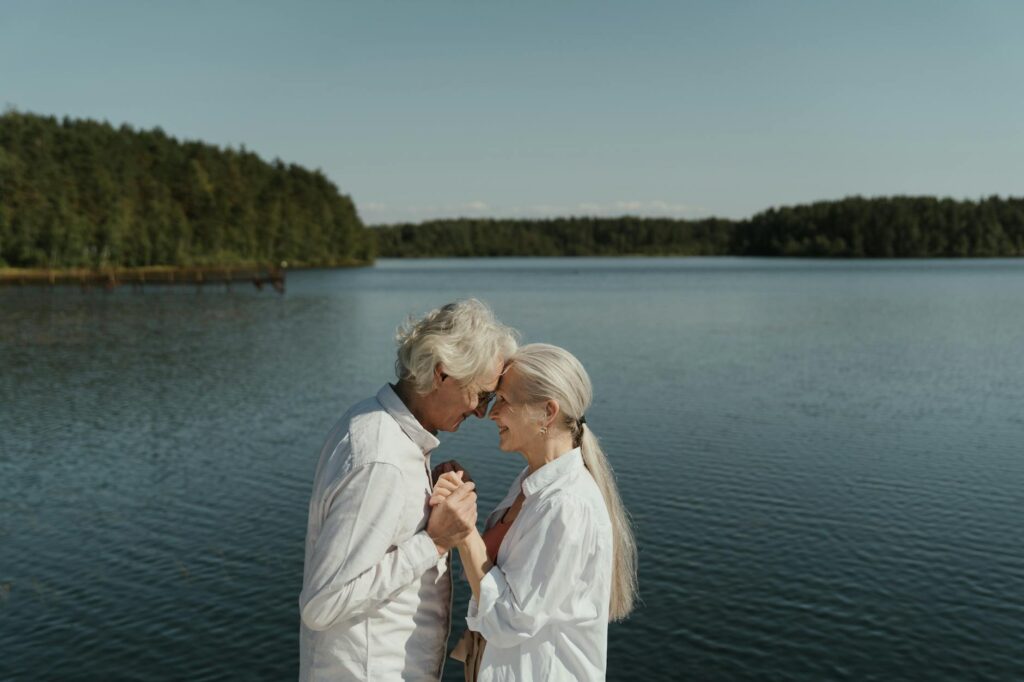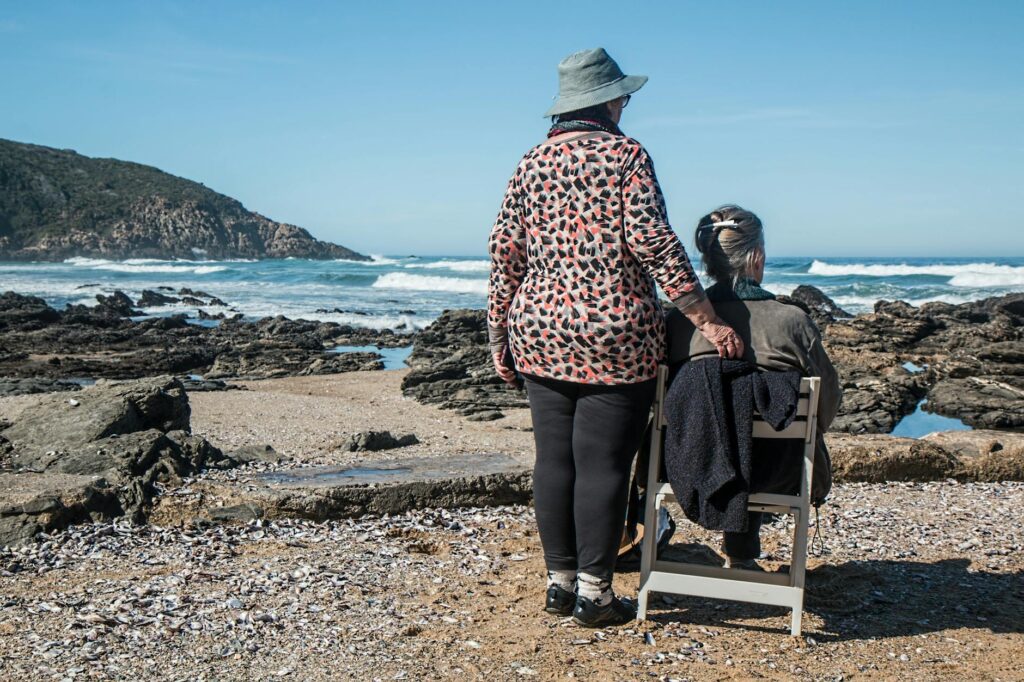Retirement goals and expectations around the world vary significantly, making it clear that retirement is not a universal experience. For example, in some countries, retirees enjoy long vacations and family-centric lifestyles, while work may continue in a limited capacity in others. Retirement goals and expectations vary with cultural values, life expectancy, and economic structure. To illustrate, from Japan’s aging workforce to Italy’s focus on leisure, each nation reflects its unique approach. In this post, we will explore these global differences, uncovering how cultural priorities shape life after work.
Retirement Goals and Expectations Around the World
Retirement goals and expectations around the world reflect a wide range of cultural priorities, from how people approach life after work to the unique ways they celebrate aging. Let’s take a closer look at how cultural values, financial preparation, and family structures shape these differences.
Cultural Perspectives on Retirement Goals and Expectations Around the World
Cultural traditions and values play a significant role in shaping retirement goals. For instance:
- United States: The U.S. often emphasizes individualism, and retirement is a personal achievement. Americans may retire to focus on hobbies, traveling, or personal growth. However, work sometimes extends into these years, as part-time jobs are typical for social and financial reasons. Explore more on cultural views of retirement here.
- Japan: In Japan, work is deeply tied to identity. As a result, many older workers continue employment well into their advanced years through programs to keep seniors active. Retirement doesn’t necessarily mean complete withdrawal from the workforce; it’s a gradual transition.
- In Mediterranean nations: like Italy or Greece, the approach to retirement focuses on slowing down and enjoying leisure time with loved ones. Social connections and shared meals are central to this phase of life.
In short, culture acts as a lens through which retirement goals and expectations around the world are shaped—whether as an opportunity for self-fulfillment, community engagement, or simply a time to rest.

Financial Planning and Savings Habits
Retirement savings habits vary widely between regions due to different economic systems and social safety nets.
- In Scandinavia, pension systems dominate in countries like Sweden, Norway, and Denmark. Generous government-backed funds ensure a secure retirement, reducing the need for personal savings. Notably, people start preparing early and rely on societal planning to guarantee comfort in later years. For more on saving strategies, check out this guide to retirement planning.
- In contrast, Americans typically depend on a mix of Social Security, retirement accounts like 401(k), and personal savings. Unlike Scandinavia, there’s greater emphasis on individual responsibility to secure a comfortable retirement. However, the lack of universal pensions leaves gaps for those who don’t save enough.
- In emerging markets like Southeast Asia or Africa, informal savings and investments often replace formal systems. For example, property investments, small businesses, or relying on children for financial support are common approaches. Governments in these areas are working to implement more robust pension systems.
Overall, economic systems are key to understanding retirement goals and expectations around the world, influencing how retirees prepare financially and experience their later years.
Role of Family and Community Support
Family and community structures heavily impact how retirees are cared for and supported emotionally and how their housing is arranged.
- In Japan, traditional values heavily emphasize filial piety. As a result, intergenerational households where grown children care for their aging parents under one roof. It’s a cultural norm to ensure seniors are well-supported by family members.
- Meanwhile, countries like the U.S. or Canada tend toward independent living as people age. Adult children might live separately from their parents, and retirement residences or communities become popular choices. This focus on independence reflects Western ideals.
- In contrast, many Latin American countries have strong community ties. Family care for the elderly is deeply ingrained, and grandparents often remain at the heart of family activities, cared for by multiple generations living together. Learn more about the importance of family support in retirement here.
Clearly, these structures go beyond logistics; they reflect deep-rooted cultural values about aging and the role of family. Whether it involves a close-knit family or a supportive retirement community, relationships significantly shape the quality of life during retirement.
Retirement means different things depending on where and how you’ve lived. Is it about personal freedom, family ties, or financial preparation? Every culture seems to have its answer.
Daily Life and Retirement Goals Around the World
Retirement means different things globally, and retirees’ daily lives vary based on culture, resources, and lifestyle priorities. Let’s examine how people in various parts of the world approach their social lives, living arrangements, and health in retirement.
Social Activities and Hobbies
What do retirees do to fill their days? The answer changes depending on where they live. Social activities, hobbies, and personal fulfillment take center stage during retirement.
- In Europe, many retirees dedicate their time to volunteer work or lifelong learning. Germany and France offer workshops and local history tours catering to retirees eager for intellectual engagement.
- For American retirees, hobbies like golf, gardening, or RV travel remain popular. Many also volunteer their time to organizations like food banks, animal shelters, or tutoring programs. Explore more retirement activities here.
- Asian retirees, especially in places like Japan, are known for joining senior clubs focused on traditional arts like calligraphy or origami. Group excursions to temples or scenic spots are standard, fostering community and reflection.
Travel is another major outlet for retirees worldwide. Some choose lengthy cruises or go backpacking after retirement to explore the world. Meanwhile, at-home hobbies like knitting, cooking, or even learning an instrument are universal favorites for staying creative.

Housing and Living Arrangements
Where retirees live not only reflects their financial situation but also their cultural approach to aging.
- In Asia, multigenerational households are traditional. Retirees often live with children and grandchildren, ensuring strong family support while passing down cultural knowledge. This setup is typical in countries like Japan, India, and China.
- Europe is seeing a rise in co-housing communities, especially Scandinavia and Germany. These modern retirement villages offer communal living spaces while prioritizing privacy and independence. They’re ideal for those who value friendships and shared responsibilities. Learn more about housing trends in retirement from this global report.
- Meanwhile, North America leans toward independent living, with many retirees opting for senior communities or staying in their homes. Retirement villages with specialized services appeal to those looking for lifestyle-oriented housing solutions.
Cultural values shape whether retirees stay close to family or prefer community-driven environments. Flexibility and access to care are becoming global priorities.
Health and Wellness Practices
Looking after physical and mental health is an essential focus in retirement, though different cultures take unique approaches.
- In Nordic countries, retirees follow an active aging philosophy. Outdoor exercise like hiking or cross-country skiing is common. Health benefits in Sweden and Denmark are comprehensive, allowing seniors to stay fit well into later years.
- Traditional medicine plays a key role in wellness across Asia. Herbs like ginseng or turmeric are staples for maintaining long-term health. Seniors in China and India often incorporate yoga, tai chi, or acupuncture.
- Americans often lean on personalized fitness routines and meal plans to stay healthy. Wellness programs cater to retirees, offering group yoga, swimming, and brain-training games. Explore more retirement wellness tips here.
Good health is a cornerstone of a fulfilling retirement, no matter the approach. Whether it’s herbal remedies, exercise, or community-based activities, the global focus on wellness continues to grow.
Retirement goals and expectations around the world influence retirees’ daily lives, shaping how they prioritize community, hobbies, and wellness. How they spend their time speaks volumes about what they value most—curiosity, community, or health.
Challenges and Opportunities in Retirement Goals and Expectations Around the World
Retirement goals and expectations around the world are deeply influenced by local challenges, such as aging populations, economic strain, and social isolation. Factors like aging populations, cultural values, and economic systems play a pivotal role in shaping this stage of life. Let’s explore the hurdles retirees face and the innovative solutions to improving their quality of life globally.
Aging Populations and Economic Strain
An aging population is creating immense pressure on pension systems, particularly in regions like Asia and Europe. As life expectancy rises and birth rates decline, fewer workers contribute to pension funds while the elderly population grows.
- Asia: Countries like Japan and South Korea are witnessing rapid aging. This shift puts governments in a difficult position as older adults increasingly depend on state-backed pensions. Policies for delayed retirement or private savings schemes are emerging as stopgaps in these nations. Studies suggest these challenges could impede economic growth unless comprehensive reforms are introduced. Learn about Asia’s public pension challenges here.
- Europe: The strain on pension systems is similar. Nations like Italy and Germany face shrinking workforces, resulting in fewer contributions to public funds. Some governments are encouraging a mix of funded pensions and employer-based savings plans to address this. Read this IMF report on aging’s impact on pensions for broader insights.
In both regions, the ripple effect of an aging population is seen in budgets for healthcare, social security, and other essential services.

Loneliness and Social Isolation
The structure of societies heavily influences how retirees experience social engagement—or isolation. Individualistic cultures tend to place a higher value on independence, often leaving older adults to navigate loneliness. Meanwhile, collectivist societies have long embraced intergenerational living, but even these systems face challenges as urbanization rises.
- Individualistic Cultures: In places like the U.S. or Canada, the emphasis on personal freedom means older adults may live alone or in assisted living facilities. Loneliness is a significant mental health concern, often leading to depression or anxiety. Programs promoting senior-friendly social groups and accessibility improvements are helping combat these issues.
- Collectivist Cultures: Countries like India and China have traditionally relied on family structures to support their elderly. However, urban migration—a byproduct of modernization—is weakening these networks. The younger generation often moves to cities for jobs, leaving older adults isolated in rural areas. Governments are stepping in by developing urban elderly care programs and better transportation links for ease of interaction. For more cultural comparisons, explore this study on loneliness.
Addressing loneliness isn’t just about personal well-being; it’s essential for building inclusive communities where retirees feel valued.
Innovative Solutions
Challenges in retirement have sparked creative ideas and advanced technologies aiming to improve the lives of the elderly. Solutions like universal basic income (UBI) trials and tech innovations are starting to produce significant results.
- Universal Basic Income Trials: Countries like Finland and Canada are testing UBI to provide financial safety nets for all, including retirees. While not widely adopted yet, UBI could reshape retirement by guaranteeing a baseline income for older adults. Read more on the potential of UBI in this research paper.
- Technological Advancements: Technology makes life easier for retirees, from smart home gadgets to wearable health devices. For example:
- Wearables: Devices that monitor heart rates, activity levels, and sleep patterns.
- Smart Homes: Automated appliances and security systems suited for elderly users.
- Social Apps: Platforms exclusively connecting seniors to social groups or nearby events.
Technology doesn’t just solve practical problems; it also fosters independence and enhances quality of life.
Retirement challenges like financial strain and loneliness are daunting, but many innovations offer hope. By addressing these issues collaboratively through government, community, and technological efforts, societies can ensure retirees thrive in their golden years.
What the Future of Retirement Could Look Like
As society evolves, so do retirement plans. Thanks to changing demographics, technological advancements, and economic pressures, the next decade could fundamentally change how people retire. Let’s explore what trends and shifts may shape retirement around the globe.
Tech-Driven Retirement Plans
Technology is rapidly transforming all aspects of life, and retirement is no exception. More innovative tools and automation are making retirement planning seamless and accessible.
- AI and Financial Planning: Apps powered by artificial intelligence are helping individuals optimize their savings. They provide personalized advice based on spending habits and future goals, functioning as on-demand financial advisors.
- Automated Enrollment: More workplaces are implementing automatic enrollment into retirement savings plans, ensuring employees are better prepared for their post-work years. According to Paychex, automated tools paired with financial education are expected to gain significant traction.
- Biometric Access: Secure access to funds through biometric technology, such as fingerprint or retinal scans, is being introduced to combat identity theft among retirees.
These advancements aren’t just convenient; they’re setting a new standard for retirement security.
Active Aging and Redefining Work
The 65-and-up crowd is reshaping stereotypes. Retirement no longer means stepping away from all forms of work or activity. A growing number of people are choosing to stay engaged in some capacity.
- Extended Careers: Many plan to work part-time or freelance after reaching retirement age, not just as a source of income but also for social interaction and mental engagement.
- Wellness-Focused Lifestyles: Retirees are increasingly prioritizing health and fitness. With the adoption of wearable fitness trackers and community-based exercise programs, active aging has become a movement.
- Lifelong Learning: Platforms such as online courses and local workshops make it easier than ever for retirees to pick up new skills or hobbies. Retirement is seen not as an end but as a fresh beginning.
For more on trends shaping active aging, refer to WorldatWork.
Social and Environmental Consciousness
Retirement could focus more on sustainability, inclusivity, and global mindfulness.
- Ethical Investing: Retirees are now directing their investments toward funds that address climate change or social inequality. Ethical investing aligns financial goals with personal values.
- Green Retirement Communities: Eco-friendly housing options are growing in popularity. These communities promote sustainable living with solar energy, local farming, and reduced waste practices.
- Digital Nomad Retirees: Remote work technology makes it easier for retirees to live abroad temporarily, combining leisure with purpose. Affordable housing markets in Southeast Asia are already drawing retirees looking to stretch their savings.
While trends are diverse, they point toward a forward-thinking, globally connected retirement lifestyle.
Longevity and Financial Security
As lifespans increase, ensuring financial security over extended retirement periods becomes paramount. Innovations in this area are setting the tone for the future.
- Flexible Pension Models: Countries are moving toward pensions that adjust based on longevity estimates, ensuring funds last as long as retirees do.
- Micro-Savings Apps: These apps help users save small amounts daily, which add up over time, making retirement planning approachable for younger generations and informal workers.
- Universal Basic Income (UBI): Trials in certain countries, like Finland, promise to provide a safety net that includes retirees. Read more on this topic via the J.P. Morgan report.
The challenge of longer lifespans brings opportunities for innovative solutions, ensuring a balance between living well and financial stability.
Retirement as a Personalized Experience
Gone are the days of one-size-fits-all retirement plans. New trends point to highly customized retirement options that cater to individual needs, preferences, and lifestyles.
- Personalized Financial Tools: Technologies make it easier for retirees to build plans suited to their unique objectives.
- Diverse Housing Options: From co-housing to compact urban residences, retirees today can choose their living style based on specific needs like community, care, or independence.
- Cultural Immersion Travel: With more disposable time, retirees explore travel opportunities focused on education and cultural experiences.
In the coming years, innovation, diversity, and inclusion will redefine what it means to retire globally.

FAQs About Retirement Cultures Around the World
Retirement is an interesting phase of life that often mirrors different cultures’ unique customs, values, and economic systems. People everywhere have their way of marking the transition from work to leisure, and their practices reveal a lot about societal priorities. Let’s answer some frequently asked questions about how retirement is approached globally.
What Are Retirement Ages Around the World?
Retirement age varies greatly depending on the country and local policies.
- In Japan, due to an aging population, many people work until their 70s or beyond to maintain financial security.
- France, on the other hand, is known for early retirement; French citizens often retire by 62, enjoying one of Europe’s lowest official retirement ages.
- In New Zealand, retirement is more flexible, with many people continuing part-time work well into their senior years.
- Meanwhile, in the U.S., the most common retirement age hovers around 66–67, with Social Security benefits tied directly to age.
Each approach reflects cultural differences in how work, life, and aging are valued. For further details, explore this global overview of retirement age trends.
How Do Healthcare Systems Impact Retirement?
Healthcare access and quality are crucial for retirees but vary widely across countries.
- Nordic countries like Sweden and Denmark enjoy universal healthcare systems, often cited as some of the best for retirees—ensuring peace of mind even in old age.
- In the U.S., retirees rely heavily on Medicare, though gaps in coverage often require private insurance supplements.
- In South Korea and Japan, an aging population is driving innovations in healthcare, including home-care technology and elder-focused services.
- Mexico faces the challenge of offering basic care to retirees, with private healthcare often serving as the go-to for those who can afford it.
The accessibility of healthcare plays a prominent role in shaping both the quality and approach to retirement globally.
What Role Does Family Play in Supporting Retirees?
Family involvement in retirement changes significantly depending on cultural norms and societal structures.
- Family ties are crucial in Asian countries such as India and China. Elderly parents often live with their children, and caregiving is considered a family responsibility.
- In Western cultures like the U.S. or Canada, parents tend to live independently or transition to senior living communities. Independence is usually favored over intergenerational households.
- Latin American cultures strongly emphasize multigenerational living, where grandparents play key roles in family dynamics and daily life.
- In some European countries, the focus is on community-driven support systems and family involvement.
These differences reflect deeper cultural values about interdependence versus independence in aging.

Are There Cultural Traditions Associated with Retirement?
Many cultures mark retirement with unique ceremonies or traditions that celebrate this life milestone.
- In South Korea, the 60th birthday, known as hwangap, celebrates the completion of the complete zodiac cycle and welcomes an exciting phase of life.
- In Greece, elders are deeply respected, and retirement may include social rituals designed to honor the wisdom of old age.
- In Native American tribes, older members are often revered as keepers of cultural traditions and may play active roles as teachers and advisors.
- Retirees in Japan often gradually transition from work to leisure, with traditions like shukatsu (end-of-life planning) reflecting a mix of spiritual and practical preparation.
Local customs often help retirees navigate their next chapter with meaning and purpose. Read more about traditions tied to retirement around the world here.
How Does Religion or Spirituality Influence Retirement?
Spiritual beliefs often provide a guiding framework for retirees, shaping their goals and daily habits.
- In Hinduism, retirement aligns with the Vanaprastha stage of life, a period for spiritual growth, detachment, and service.
- Christian societies often emphasize charitable work and community engagement, offering retirees a way to stay socially connected.
- In many Buddhist regions, seniors focus on mindfulness practices, often dedicating their time to temples or monasteries.
- Across Islamic cultures, retirement can include increased time for religious devotion, travel to holy sites, and participation in charity.
Spirituality can transform retirement into more than leisure; it can become a period for personal growth and giving back.
Do Retirees in Different Countries Share Similar Goals?
Interestingly, retirement goals share some overlap globally, but priority levels differ.
- Travel: Popular worldwide, with retirees from Europe and the U.S. often choosing extended vacations or cruises.
- Education: Lifelong learning is valued in countries like Germany, where retirees frequently enroll in workshops or courses.
- Health: Wellness and staying active are universal goals, with retirees embracing everything from yoga in India to Nordic walking in Scandinavia.
While the methods may differ, the universal aspirations of staying healthy, connected, and fulfilled shine through.
Each country’s approach adds a unique flavor to retirement, but the common goal remains to enjoy life’s golden years in ways that align with personal and cultural values.
Conclusion: Understanding Retirement Goals and Expectations Around the World
Retirement goals and expectations around the world are as unique as the people experiencing them, shaped by the priorities of each culture. Some focus on leisure, others on family, and many balance both with financial security. These differences highlight how deeply cultural values and economic systems shape life after work.
As you reflect on the diverse ways retirement unfolds worldwide, take a moment to think about your goals. What does a fulfilling retirement mean to you? Balancing personal aspirations with practical planning ensures your golden years are meaningful and secure.
Your future starts today—consider reaching out to a financial expert or exploring global retirement resources to better prepare for what’s ahead. Retirement isn’t a one-size-fits-all journey, but learning from an international perspective can inspire a plan that fits your vision.
🌎Which Country’s Retirement Style Matches Yours?
Retirement is more than just stopping work—it’s about crafting a lifestyle that excites you! From tax-friendly havens to beachside escapes, different countries offer unique ways to enjoy retirement.
📍 Check out our interactive ‘Retirement Around the World’ map to explore global retirement styles and find inspiration for your next adventure.
💬 Which country’s retirement lifestyle speaks to you? Drop a comment and let’s chat about your dream retirement destination!







Add comment